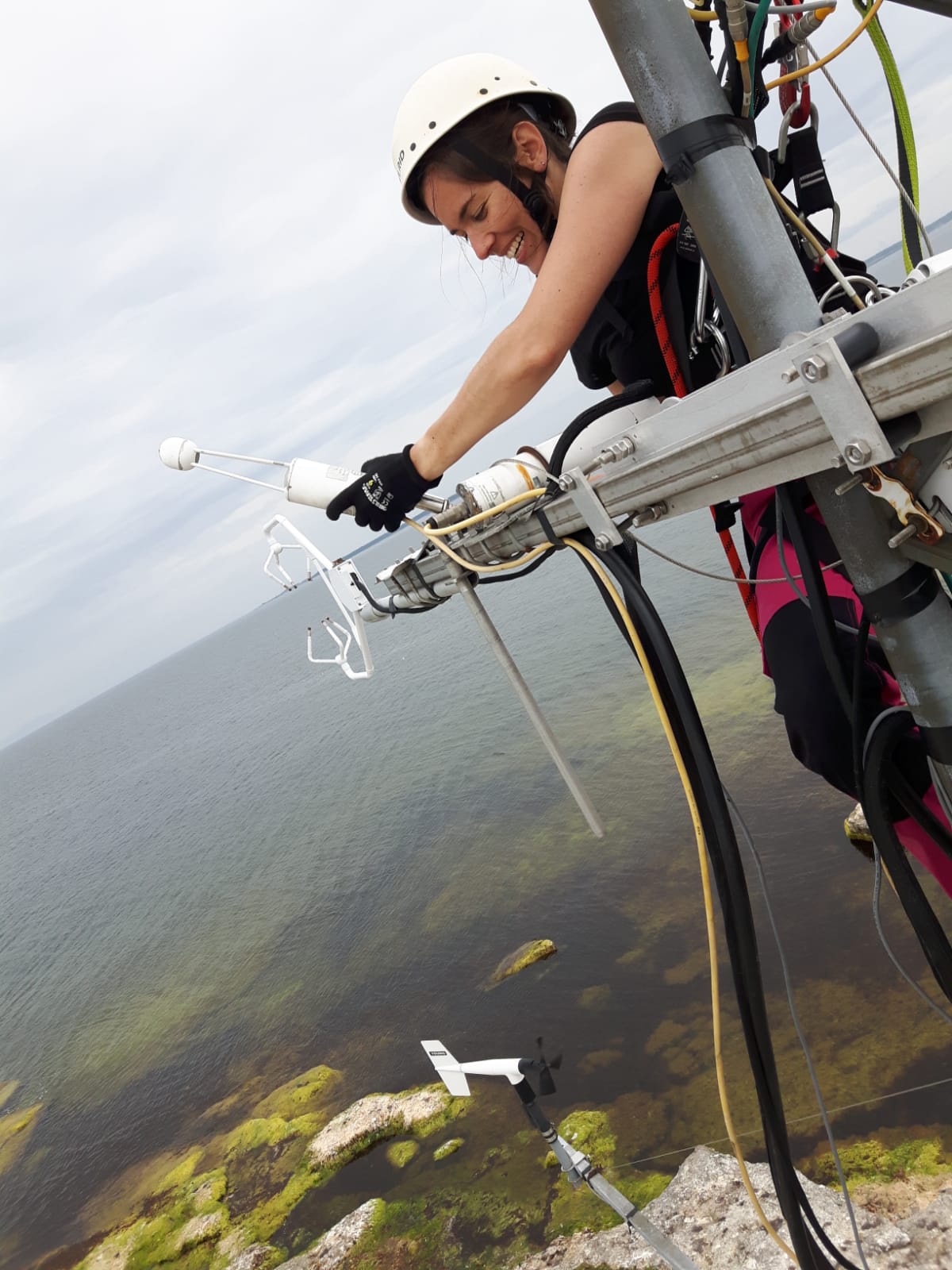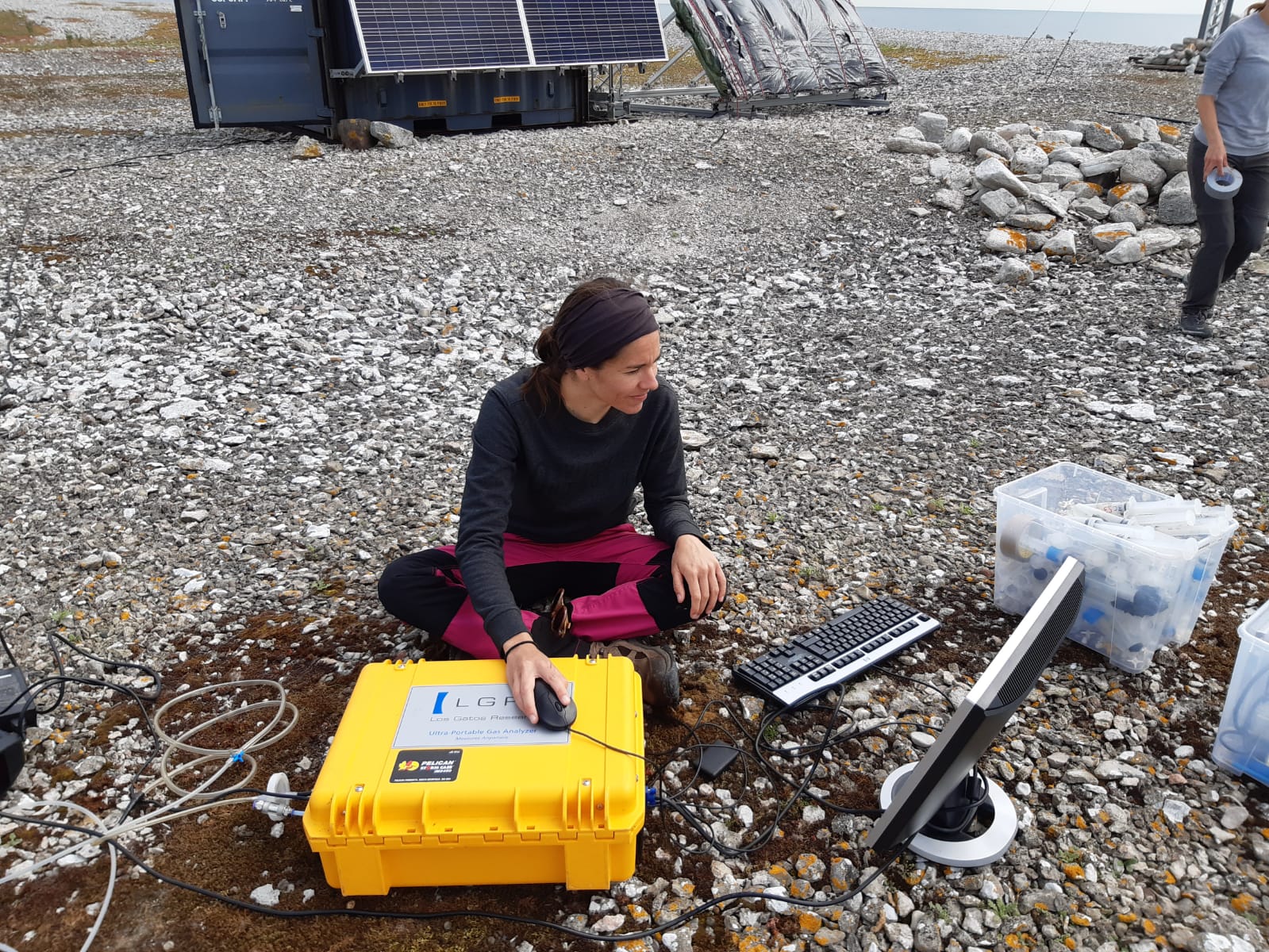
Östergarnsholm is an ICOS Ocean station in the Baltic Sea in front of the Swedish coast, that measures atmospheric and water-side measurements. What’s it like to work at the station? And why is it useful for a PhD student to take part in fieldwork? Lucia Gutiérrez Loza explains.
Östergarnsholm is one of 23 ICOS Ocean stations, located on an island on the east coast of Sweden. Lucia Gutiérrez Loza has been working at the station as part of her PhD in Meteorology at Uppsala University. Summer is an important time for fieldwork because the group needs good weather conditions to access the island.
Östergarnsholm has instrumentation for atmospheric measurements and water-side measurements. Lucia Gutiérrez Loza’s and her colleagues’ main tasks on the island have to do with the calibration and maintenance of the measuring equipment. The island has one 30-meter measuring tower for atmospheric measurements, that has sensors at different heights.
“We have two different types of sensors: slow response sensors that are located in different levels of the tower that measure wind speed, temperature, humidity and CO2 concentrations. High response sensors measure fluxes. Those sensors can do 20 measures every second so they are highly specialized,“ she explains.

What does a typical workday look like?
A typical work day on the island starts early in the morning. The group brings all they need with them and makes a plan for the day. Calibration takes the longest, which is why it’s usually done first thing in the morning.
“The sensors that require more work are these high-frequency sensors, which are located at 10 meters and 25 meters in the tower. The laser-based instruments have optical windows, so you need to make sure the mirrors are clean so they get a good reading. Measuring at different heights is important to get an understanding of both the vertical and horizontal variability.”
Climbing towers might not be for everyone, but Lucia Gutiérrez Loza has taken on the challenge fearlessly.
“They did ask me in the job interview whether I’d be ready to climb the tower”, she said, smiling.
Luckily, not every day is a climbing day. Much of the work happens remotely because of autonomous technology – the sensors are constantly monitored from Uppsala. Whenever a sensor is providing data that doesn’t make sense, the group will know and fix the issue during their next visit.
Another important task has to do with water samples that the group takes near a buoy that measures pCO2 continuously through an autonomous system. The water samples, which are then sent for validation to the Ocean Thematic Centre in Bergen, Norway, are taken to ensure that the sensors in the system are working correctly. This is part of the standard data quality protocol set by ICOS.

Being in touch with data useful for professional development
Working closely with the measurements has increased Lucia Gutiérrez Loza’s understanding of the many ways data is collected, and what it takes to produce high-quality data.
“I really like doing fieldwork. When we do research, we might not always understand what’s behind the data. Being out there and doing the manual work helps me to get a better understanding of the environment and the site, which helps me to communicate my results better.”
During the summer, when the weather is good, the researchers usually do longer field campaigns, to complete tasks that take up more time, such as exchanging sensors for factory-calibrated ones, cleaning and calibrating. Often there’s also time for additional measurements, that the group does either to develop new research projects, for validation, or just for curiosity.
“Last time we brought a drone with us to measure humidity profiles over the water,” Lucia Gutiérrez Loza explains. “No one has yet looked at the data but we were glad to see it worked.”
Learn more about ICOS Ocean Observations.